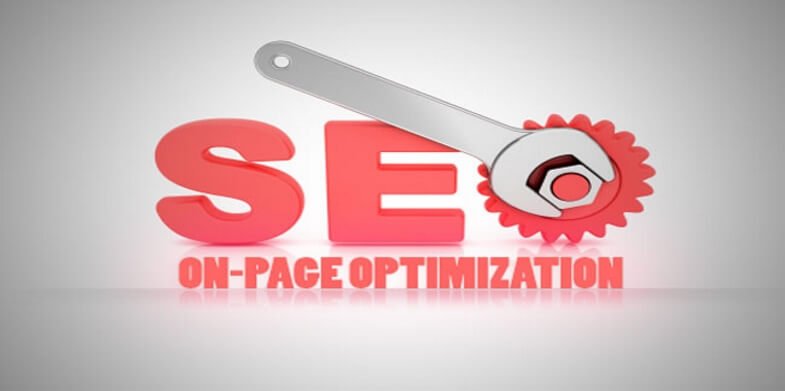
When considering on-page optimization, you have probably heard over and over about keyword density and meta tags.
If you are looking for some handy strategies to use on your website today, then you will love this blog post.
This simple checklist, if followed correctly will get more traffic each time to your website when publishing content.

1. Excellent content
Great content is now a must to rank well. The search engines reduce the ranking of web pages with poor grammar and spelling mistakes. It means that websites with good written content are ultimately starting to obtain the ranking that they are worthy of.
“How long must my content be?” is a question that many individuals ask. While, there is no exact answer to this, most people agree that around 500 words is a good minimum word length for a normal blog.
It is also a great idea to blend in longer power posts. Research shows that longer posts tend to rank much better—remember, Google really likes convincing posts with over 2,000 words.
To improve your possibilities of getting a better page ranking in the future, it should have top quality content, be more than 2000 words, and should not be promotional.
One last tip: Length is not the only thing which matters. Make your blog post fun to read. Avoid stuffy, boring content that makes it look like a legal document. In its place, choose more conversational, humorous content when writing essays, guides or reviews.
2. Keywords Research
While originally single keyword ranking was a huge deal way back when, these days Google updates have changed the game completely. You can no longer rank websites on the basis of a few generic keywords, you must do a complete keyword research, find relevant keywords that are suitable for your website and garner traffic using White Hat practices.

Ever since the laungh of Google’s HummingBird update , SEOs have begun the shift from solo keyword phrases to topics. Hummingbird emphasizes more on the aim of phrase with a much better understanding about of what the context actually means. This enables search engines to answer any questions with website pages even if that page isn’t optimized for the phrase.
That being said, doing keyword research with the Google Adwords tool can still give you some great ideas for the keywords. It will be easier for you to rank for keywords with a lower to medium competition in your niche.
3. Natural keywords usage
The main rule for mixing keywords in your content is to ensure that they sound natural. When you write content, the keyword phrasing should be natural, it should not seem like the content was written around the keywords, but rather the keywords are casually included within the content. When you write and use natural keyword placement, you will more than likely rank better with the search engines.
4. Header tags
It is generally a great idea to incorporate keyword phrases into the header tags, however do not overdo it. When you incorporate a keyword phrase within a header tag, then it’s best to utilize the first heading onto the page (H1) as Google will always take this as a higher priority.

5. Page titles
The page titles must have keyword phrase you are targeting, but also be descriptive for the readers. For instance, if your blog is regarding “Labrador training,” a good title may be “Labrador Training in 6 Easy Steps.”
Your page title shouldn’t go beyond 70 characters. While the search engines index longer titles, it will get lost in search results.
6. Optimized URL
You can put the keyword in your URL, but do not overdo it. This looks suspicious, along with a keyword-optimized URL and exact match domain. But, branded root domains with optimized URLs are fair game.
7. Page loading time
When Google added page speeds in their algorithm, websites that had slower load times experienced a drop in their traffic from Google. The page load speed tends to be an important ranking factor for search engine Google.
To fix page loading speed issues:
- Measure how long the page takes while loading.
- Optimize your site to enhance performance.
- If you’re using a shared hosting server, then you can try switching to a new hosting provider to observe if it makes any positive difference and changes.
- After making changes, assess the performance once more.
If you utilize WordPress, ensure that you keep your plugins to the minimum, because too many of them will just bog down your website. Stick with the lean code (like Genesis and Thesis) or a site builder that lets you customize as well as tweak the codes. Not only does this help the page speed, but also keeps the blog from looking generic and cookie-cutter.
It is a good idea to check your page loading periodically on some random pages to ensure changes to your website have not affected the performance.

8. Google Authorship
It is often a good idea to use Google + when it comes to boosting your website ranking. Google ranks your pages higher if you opt for Google Authorship, where you basically link your content to a Google+ account or profile.
9. Internal linking
Ensure that you link your contents with all other internal pages which would be beneficial for your readers. It will help boost your website’s SEO as well as make it simpler for the readers to navigate and find more useful content that you have to offer.
10. Responsive designs
It is roughly found that over 80+ percent of US adults are upgrading to smart phones for surfing the web and staying connected on the go. That is the reason why it is important that you utilize a responsive design for your site so that the pages show up easily on a small screens.
Google also recommends responsive designs because they make it simpler for the visitors to have a single URL. Your pages will load quicker because your site does not have to be redirected on another page for the mobile device.
Google’s algorithm continues to change all the time. It is important to stay on top of the industry and continue to change as the algorithm changes.

